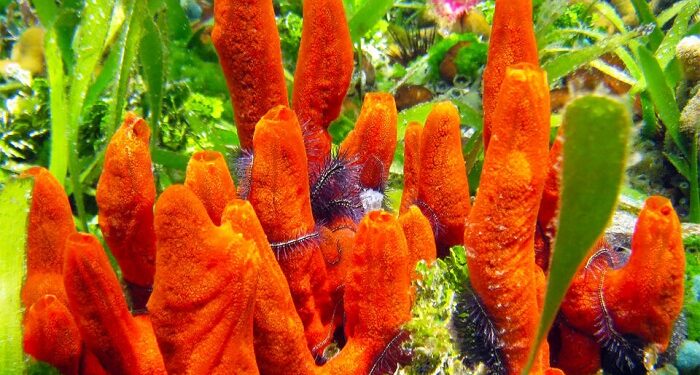Natural sea sponges, members of the phylum Porifera, are some of the most intriguing and ancient creatures inhabiting our oceans. Their simple appearance belies a world of fascinating secrets and remarkable facts that contribute significantly to marine ecosystems and human life. This article delves into the amazing facts and hidden wonders of natural sea sponges, highlighting their biological, ecological, economic, and medicinal importance.
Ancient Origins and Discovery
Sea sponges in the ocean are among the oldest living organisms on Earth, with fossil records dating back over 600 million years. Ancient civilizations, such as the Greeks and Romans, were familiar with sea sponges, using them for various purposes including bathing and cleaning. Aristotle, the Greek philosopher, was among the first to study and document their properties, recognizing them as animals rather than plants.
Unique Biological Characteristics
Simple yet Complex Structure
Despite their simple structure, sponges in the sea possess a remarkable level of biological complexity. They lack true tissues and organs, consisting instead of a porous body with multiple channels and chambers. The outer layer, known as the pinacoderm, is composed of flattened cells called pinacocytes. The inner layer, or choanoderm, is lined with specialized cells known as choanocytes, which have flagella that help in water circulation and feeding by filtering microscopic particles from the water.
Skeleton of Spicules and Spongin
Sea sponges have a skeleton made up of spicules and spongin. Spicules are needle-like structures composed of silica or calcium carbonate, providing structural support. Spongin, a form of collagen, adds flexibility and resilience to their bodies. This unique combination allows sea sponges to adapt to various marine environments, from shallow coastal waters to the deep sea.
Ecological Marvels
Water Filtration
One of the most astonishing facts about sea sponges is their ability to filter water. A single sea sponge can filter thousands of liters of water daily, removing bacteria, plankton, and organic matter. This filtration process plays a crucial role in maintaining water quality and clarity, benefiting the entire marine ecosystem.
Habitat and Biodiversity
Sea sponges create habitats for a multitude of marine organisms. Their porous bodies provide shelter and breeding grounds for various species, including bacteria, algae, and small invertebrates. This symbiotic relationship enhances biodiversity and contributes to the health and stability of marine ecosystems.
Economic and Medicinal Significance
Commercial Uses
Natural sea sponges have been harvested for centuries due to their absorbent and durable nature. They are prized for use in bathing, cleaning, and personal care products. Their gentle texture and natural composition make them suitable for sensitive skin. Additionally, sea sponges are used in artistic applications, such as painting and ceramics, where their unique textures create distinctive effects.
Bioactive Compounds and Medical Potential
Sea sponges are a treasure trove of bioactive compounds with significant medical potential. Researchers have discovered numerous chemicals produced by sea sponges that exhibit antibacterial, antiviral, and anticancer properties. For example, spongistatin, derived from sea sponges, has shown promise in treating certain types of cancer. Other compounds are being studied for their potential as antibiotics and antiviral agents, making sea sponges a valuable resource in pharmaceutical research.
Conservation and Sustainable Practices
Given their ecological importance and economic value, conserving sea sponge populations is crucial. Overharvesting and environmental changes pose threats to their survival. Sustainable harvesting practices, such as controlled collection and aquaculture, are being promoted to ensure the long-term viability of sea sponges. Protecting their natural habitats and reducing pollution are also essential steps in preserving these remarkable organisms.
Natural sea sponges are truly nature’s marvels, with their ancient origins, unique biological characteristics, and significant roles in marine ecosystems and human life. From their ability to filter water and enhance biodiversity to their commercial uses and medicinal potential, sea sponges continue to captivate scientists and enthusiasts alike. By adopting sustainable practices and prioritizing conservation, we can ensure that these fascinating creatures continue to thrive and contribute to the health and beauty of our oceans for generations to come.
















